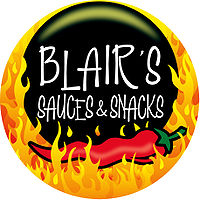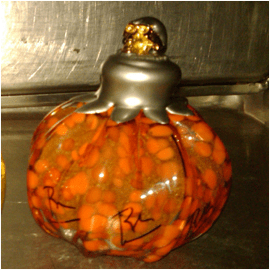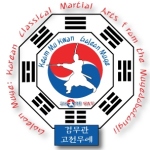And Koreans Think They're Hot!
I’ve always been a chilli-head and enjoyed trying the different chillies that have come my way. I often find it amusing that Koreans assume a westerner will find Korean food too hot where if anything, personally, I find it too mild. In Great Britain, an acquaintance with very hot food is something many of us have experienced, thanks to Indian and Thai restaurants.
Take the famous vindaloo, a curry from Goa, India, which uses malt vinegar, potato and is probably the hottest, widely available curry in the UK. A ‘tindaloo‘ is occasionally on Indian restaurant menus but this is probably either a vindaloo spiced-up with Scots bonnet, habanero or naga chillies, all among the hottest of all chillies available or an equally, very hot curry from Bangladesh. The hottest curry likely to be found in a curry house, is a ‘phall‘ though this does not appear on menus as regularly as a vindaloo. A decent vindaloo will start your nose running and produces an after burn which when you next go to the toilet, can be quite painful.
Scots bonnets and habaneros, which are related and similar in appearance, share a score on the Scoville Scale of between 100.000-350.000. Until recently, these chillies were often cited as the world’s hottest but several other chillies, cross breeds, now hold this honour. The Guinness Book of Records recorded the Naga Jolokia, (or Bhut Jolokia) chilli, from Bangladesh and Assam, as the hottest ever recorded, in 2007, reaching 1,041,427 on the Scoville Scale. However, the Jolokia is about to be knocked off its perch by the recent appearance of the ‘Infinity chilli,’ bred in Grantham, Lincolnshire, England, by Nick Wood.
So, let’s put this in context; a bell pepper rates 0. SHU (Scoville Heat Units), while a Jalapeno scores between 2.500-8.000 SHU. Most people rate the Jalapeno as the first of the ‘hot’ chillies and it used as a bench mark against which to rate other varieties. For example, Tabasco Original Hot Sauce, is 50% the heat of a Jalapeno, making it very mild, and scoring 2.500 SHU. The habanero scores 100.00-350.000 and is around 70 times hotter than the jalapeno. I’ve seen a friend weep in agony after he chopped a habanero and then rubbed his eyes. With a Scoville Heat Unit of 1,041,427, the Bhut/Naga Jokolia is 208.29 times hotter than the jalapeno and 400 times hotter than Tabasco Original Hot Sauce – which by now, is as mild as milk.
Scoville scores over one million takes us into the realms of atomic chillies and while their raw culinary use begins to wane, their potential in sauces and as paint stripper, increases. The ‘Infinity chilli’ scores 1,176,182 SHU putting it around 100.000 units beyond the Jokolia. Anything hotter can no only be bought as a sauce or more likely as a food additive or pure capsaicin crystals. The heat however, is still on the rise!
Scott Roberts, a Missouri based chilihead has compiled an extensive list of sauces and chillies listing their Scoville ratings and comparisons with the jalapeno. He lists many ‘sauces’ exceeding a million Scoville units and includes, purely for interest, police pepper spray which scores between 3 and 5 million SHU, 1000 times hotter than a jalapeno. And just to give you a taste of how hot, ‘hot’ can get: at 6 million, Crazy Uncle Jester’s The Jester Sauce, 1200 times hotter than a Jalapeno and about the same as the British made, Dragon’s Blood sauce, made from the Naga Jolokia.
Many of the highest rated ‘sauces,’ increasingly pure capsaicin suspended in oil or, in unadulterated crystal form, are collectors items, numbered and signed and in limited editions. The products are potentially dangerous and need careful handling. ‘Blair,’ a New Jersey based company, is probably one of the most rated for its line of connoisseur, high SHU scoring sauces many of which are collector’s items.
Blair’s 2007 Halloween Reserve, at 13.5 million SHU and 2700 stronger than a jalapeno, sold out within six hours of going on the company’s website. The 2009 Reserve was selling at $300 a bottle and apart from the fiery content, the bottle was a hand blown pumpkin.
At the top of the list, Blair’s 16 Million Reserve; pure capsaicin at 16 million SHU and 3200 times hotter than a jalapeno. On the, Scott Roberts website, Scott quotes:
“Blair’s 16 Million Reserve is the latest in the line of reserves from Blair. This reserve bottle contains 1ml of pure capsaicin crystals. 16 Million Reserve is not to be consumed or even opened without using extreme caution. Only 999 of Blair’s 16 Million will be produced, so get yours quick!”
And where do Korean chillies rate, I hear you ask? Well, despite copious searching, I can find no Scoville scores for the chillies you would usually buy in Korea. Certainly, the ‘cucumber chilli’ (오이고추) would rate only marginally above a bell pepper, at around 100-1000 SHU. The standard green chilli used in Korea probably rates between a Serrano (10.000-23.000 SHU and about 4.6 times hotter than a jalapeno) and the Thai pepper (50000-100.000 SHU). The hottest Korean chilli is the ch’eong-ryang chilli (청량고추), which I would estimate to be approximately between that of a hot Thai pepper and the bird’s-eye chilli (100.00-225.000 SHU and around 45 times hotter than a jalapeno). Certainly, Korean chillies fall substantially lower in heat than the habanero type chilli.
Some Chilli Facts
In Mexico chilli juice was used to wean a baby off the nipple.
If your mouth is on fire, water or beer will only temporarily cool your mouth. The best aid is milk as even a minimal amount of oil is enough to coast the lining of the mouth and reduce the burning sensation.
If you like the taste of chillies rather than the heat, oily or creamy based food will reduce the heat of chilli and allow the flavour to come through. Carbonara with chilli is fairly common in Korea and you can easily jack-up the chilli content to levels that would scorch your mouth in other, less oily or creamy, Korean foods.
Removing seeds from chillies will reduce their heat.
And finally, to finish with:
Chilli Related Sites
The Hot Zone (USA) Excellent chilli related blog.
UK Chile Farm (UK) suppliers of Wet Fart Chilli Sauce and Ass in the Tub Chilli Sauce.
Related Articles
- New chilli could take world record, say producers (independent.co.uk)
- New “Infinity Chili” Sounds Hotter Than Homer Simpson’s “Insanity Pepper” | Discoblog (blogs.discovermagazine.com)
- Phaal Curry Challenge – Curry with a Side of Pain (odditycentral.com)
- Couple sue after Mega Death sauce hospitalizes son (boston.com)
- A Perk of Our Evolution: Pleasure in Pain of Chilies (nytimes.com)
© 林東哲 2010 Creative Commons Licence.













dont compare your spicy level “hot” vindaloo, which isnt even real indian food but a british invention, look it up, with how hot korean food is, its all relative, and you give pretty shit reasons for what you think are hot peppers in korea, for example the cucumber pepper, no one eats that for spiciness, its eaten for its refreshing taste, like a cucumber, to compare spicy with that automatically discredits everything you say as someone who hasnt gone to any of those countries and actually tried different foods, and have only eaten shitty foods from around their neighborhood. we have never claimed we have the hottest foods, but compared to the very mild foods in the west, yes most westerners cant handle it, its not to say there arent people who like spicy foods though, obviously like you. but from my experience every time i go with friends, acquaintences, or co worker theres always that one guy who claims he can handle spicy, they get the one above mild and and cant finish it saying some obvious excuse like “oh, i had a late lunch, so im full, i’ll save it for next time”.
Not sure what to make of this response as you seem so angry! Vindaloo is often cited as British but many sources claim it is Goan – look it up! Apart from having problems reading through your lazy writing, I don’t really know what your gripe is? I have just re-read the article and at no point do I claim Koreans think their food the world’s hottest. I merely suggest they often assume western waygukin don’t have a tolerance for hot food. Let’s face it, you can’t buy habanero, naga or the scot’s bonnet in Korea. I dont know why I am repeating this as the article makes this explicit and is not in the least offensive to Koreans. Indeed, having lived in Korea for over 10 years, I am a Koreaphile.
The anonymity the internet provides allows people to be very aggresive and you really need to learn some manners. You wouldn’t speak to me in such a hostile tone if we were face to face. You need to seriously chill and if the climax of your day is responding to a paltry article found in a blog, you seriously need to get a life. I get the impression you are Korean. Possibly one of those Koreans who think every waygukin is out to bad mouth Korea and Korean culture. I suggest you re-read the article properly and indeed look at the blog in general. I have great love and respect for Korean culture. Don’t be so hostile!
Hello there,
Found this article trying to find out how the capsicum sauce found in most stores in Korea scales on the SCU.
On the bottle is says 4% and then some Korean writing. I was thinking it was 4% capsicum but pepper spray ranges from 1%-3%, so it’s not that is it?
To the guy that wrote this article is was a great read, so interesting I just had to read some parts twice.
To any other readers, Korea is awesome, lovely people and great food.
Any and all constructive feedback greatly appreciated.
I was googling Capsaicin sauce and found this shitty blog. Write about getting Korean pussy or something. No one wants to read about Vindaloo and all that other boring shit. Start writing about how there are also Russian hookers in the red light district of Korea. So many other fun topics you can cover.
Lorenzo, get a freakin life you sad man. Trolling mediocre blogs to vent your frustrations is not very productive. I’m probably the only person that will read your poison.
[…] Korean peppers don’t appear on common Scoville scales (the scale that’s used to rate hot peppers relative to each other). Based on our research, it seems like they may be around 10,000 (?) Scoville units, somewhere hotter than a jalapeno but not as hot as a cayenne or habanero. Source [1] and [2]. […]
Sorry for the very late response. Koreans have a number of chillies but whether or not they are different vatieities I don’t know. The cucumber chilli is no hotter than a bell pepper. The chilli most often found and eaten raw, is probably the same as a jalapeno but there is a very hot what that appears seasonally and it is much hotter – I think I mention this, and its Korean name in the article. While close in heat to the habanero, I don’t think it is any hotter. I am currently introducing some Korean friends to the extreme heats such as the Chocolate Moruga Chilli. Awesome! Thanks for the visit.